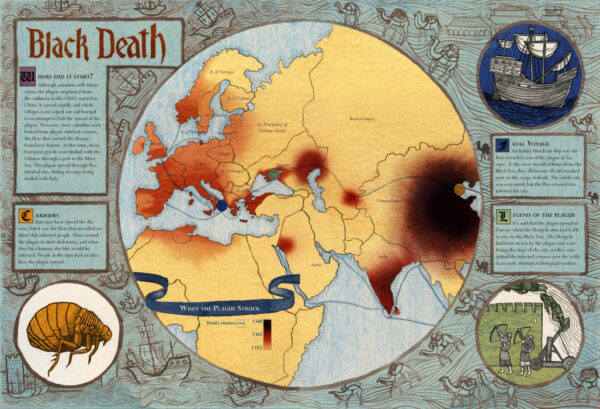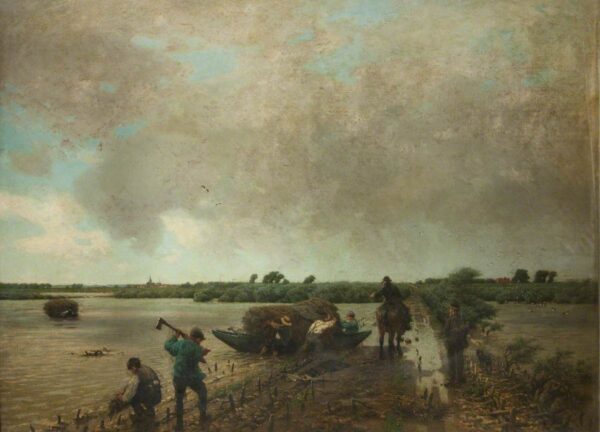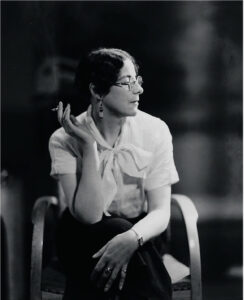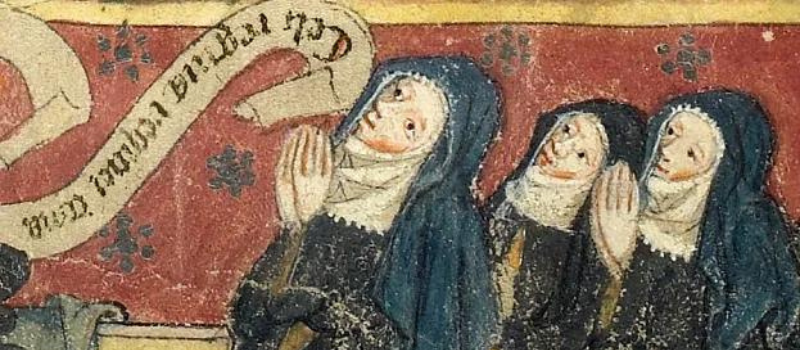 On 14 June 1940, Paris fell to the German Army. The British author Sylvia Townsend Warner wrote in her diary. ‘Paris has fallen — has been abandoned.” The occupation of Paris, the cultural pivot of Europe, and the fall of France which followed two days later were ‘a flaring, presaging comet in all men’s eyes’. The war was not going well and the German invasion of Britain was a likely next move.
On 14 June 1940, Paris fell to the German Army. The British author Sylvia Townsend Warner wrote in her diary. ‘Paris has fallen — has been abandoned.” The occupation of Paris, the cultural pivot of Europe, and the fall of France which followed two days later were ‘a flaring, presaging comet in all men’s eyes’. The war was not going well and the German invasion of Britain was a likely next move.
Warner was a member of the Communist Party and a committed anti-fascist. In1936, she and her partner Mary Valentine Ackland had gone to Spain to help the British Medical Aid Committee in support of the Republican Army. The events of 1940 as the Germans swept across Europe led Warner to re-focus on fascism and what she saw as the rather passive public reaction to momentous events.
 She wrote of hearing an ‘onlooker’ on the radio urging hearers not to be ‘too overawed’ by the event, as it is less important than ‘the steadfast courage of people in this country’.
She wrote of hearing an ‘onlooker’ on the radio urging hearers not to be ‘too overawed’ by the event, as it is less important than ‘the steadfast courage of people in this country’.
‘Look out for parachutists’, say the official spokesmen; and the bulk and blackness of the cloud behind the parachutists are – it is hoped – to pass unperceived by people looking out for parachutists. I suppose if a government were to stress the long-term effects of war no country would undertake a war. Actually, I think people here would be much more frightened if the Germans were the Black Death. Then the news – the Black Death is in Rouen, in the Channel ports, has appeared in Paris, would set people to thinking: soon I may catch it, and die.
But also, I think, the giving of news by wireless, which is non-geographical, has tended to give the war-news something of the quality of news of a pestilence. It has made it, in a fashion, an atmospheric rather than a territorial phenomenon.*
The black cloud behind the enemy parachutists is the bigger and more insidious enemy than the individual soldier – the ideology of fascism. The cloud is as dark as the black uniforms of the SS and the ideology is as pestilential as the Black Death that ravaged Europe in the 14th century. Just as the Nazis demonized their enemies and the Jews as diseased vermin so the communists named fascism as a plague.
The parachutists distract our attention from the bigger problem of an ideology that threatens to sweep all before it.
Warner began writing her novel The Corner That Helf Them in that perilous summer of 1940 and – in a note that was added to the American edition – she provided historical background on the Black Death and on the economic changes it wrought to medieval society. (See side note left.)
The “corner” of the novel is the backwater Benedictine convent of Oby in the fenlands of Norfolk. The “them” are the people – primarily women – that the convent houses between the years 1345 and 1382.
The backdrop to the novel is the isolated 1940 island “fortress” corner of a Europe smitten by the ideology of fascism. And the “them’ are the people who have heard of the plague and are fearful. Warner chose this for the epigraph:

The novel was written slowly and intermittently over the years and was not published until 1948. And the story itself is a meandering chronicle without conventional protagonists and plot.
It is the story of a place and the characters – mostly women – come and go, struggle, dream, die, and are replaced as time moves on. Along the way, the women must contend with bishops, deal with priests, struggle to assert their power and manage their ambitions.
Oby itself is the central character and the shifting external and internal circumstances that influence it are the spine of the story.
The novel starts with a scene of adultery and a brutal murder that leads – strangely – to the founding of the convent in the 12th century. That bizarre founding of a convent sets the irreverent tone for the novel.
After the first chapter, it fast-forwards to 1345 just in time to set the scene for the arrival of the Black Death in 1349.
In 1270 there were disastrous floods, and this happened again seven years later. In 1283 hornets built in the brewhouse roof and the cellaress was stung in the lip and died. In 1297 the convent’s bailiff was taken in the act of carnality with a cow. Both he and the cow were duly executed for the crime, but this was not enough to avert the wrath of heaven.
The young and silly can become great tyrants
In 1332 a nun broke her vows and left the convent for a lover. Misfortunes always go in threes, was the comment of the prioress: they might expect two more to play the same game. But after a second apostacy there was a painful Visitation by the bishop, when the prioress was deposed and Dame Emily the novice-mistress, a better disciplinarian, nominated to be her successor.
But the nuns don’t like Dame Emily. In defiance, they choose Dame Isabella Sutthery, the youngest and silliest nun among them
Dame Isabella proved fanatically harsh and suspicious, scourging the old nuns till they fainted for anguish and inventing such unforeseeable misdemeanours that no one could steer clear of offending…
Choking on a Plum-Stone
It was not till 1345, when Prioress Isabella choked on a plum-stone, that peace and quiet returned, followed by four ambling years of having no history, save for a plague of caterpillars.
When Prioress Isabella first began to gasp and turn blue Dame Alicia de Foley framed a vow to Saint Leonard, patron of the convent and of all prisoners, that if their tyrant should die of her plum-stone a spire, beautiful as art and money could make it, should be added to their squat chapel. In her mind’s eye it soared up, the glory of the countryside, and she was so absorbed in contemplation that Prioress Isabella’s eyes were lolling on her cheeks before Dame Alicia remembered to add to the saint that she would also undertake to pray daily throughout the time of the spire’s building for the repose of Isabella’s soul.
And then the Black Death came to Oby
The first two to sicken were Dame Emily and a novice, and they died on the same day. That evening Sir Peter Crowe, the convent priest, walked uninvited into the prioress’s chamber, where she sat with the treasuress, Dame Helen, and Dame Blanch the cellaress, talking calmly (as one does when all hope is gone) about the quality of some vermilion paint, newly bought for an illuminated book of hours which had been commissioned by Piers de Retteville, descendant in the sixth generation of Gilbert and Adela.
‘I am leaving you,” he said.
“Sir Peter might just as well have stayed. He would have found plenty to do,” remarked Dame Susanna, the infirmaress. Nothing could disabuse her of the notion that Sir Peter had gone to Waxelby to minister to the dying, an heroic but premature decision. She spoke to a nun called Matilda de Stapledon, who was helping her to powder dried newts and centaury roots. Presently they began to discuss the convent’s latest difficulty, shortage of labour.
 We learn of the impact of the plague through the musings of Prioress Alicia de Foley. The plague calls a halt on her dream to build a spire and puts new stress on the convent economy. The Black Death is like a war – an unstoppable force that spreads with ferocity and ruins everything it touches.
We learn of the impact of the plague through the musings of Prioress Alicia de Foley. The plague calls a halt on her dream to build a spire and puts new stress on the convent economy. The Black Death is like a war – an unstoppable force that spreads with ferocity and ruins everything it touches.
Though there had been pestilences often enough there had never been, they said, such a pestilence as this. It travelled faster than a horse, it swooped like a falcon, and those whom it seized on were so suddenly corrupted that the victims, still alive and howling in anguish, stank like the dead. The short dusky daylight and the miry roads and the swollen rivers were no impediment to it, as to other travellers.
All across Europe it had come, and now it would traverse England, and nothing could stop it, wherever there were men living it would seek them out, and turn back, as a wolf does, to snap at the man it had passed by.
The Black Death is a lethal living ruthless force – an implacable ideology out of Europe analogous to the Blitzkrieg and the sweep of the toxic ideology of fascism.
Broken Dreams, New Realities
In March 2020 I remember that Covid created the same feeling. It was coming. You could not see it yet. But you could not stop it. At the time I wrote
Awake on these mild and moonlit nights –
so quiet you cannot hear the gathering storm –
the virus creeps and spreads then leaps –
an invading army into the city, over the hills,
up the valley, across the river, inexorable.
Jumps oceans and prairies in a single bound.
Panzers rolling into Belgium.
Stukas overhead and dusty roads
filled with weary refugees
pushing prams and bearing bundles.
– from An Abundance of Caution, March 11th, 2020
With her dream of the spire on hold the Prioress must now contend with all the changed circumstances wrought by the plague. Life is a constant economic struggle
It had been pleasant to kneel on alone after the end of mass, hearing the noise of her spire growing: the whine of the pulleys, the scrape of trowels, the jar as stone after stone was set in its place, the songs and outdoor voices of the masons. But now there was no sound except the March winds hoo-hooing through the gaps, and the thought that the second part of her vow could still be kept was cold comfort. Besides, could she be sure even of that? The pestilence might stop her mouth. Already her treasuress was making it difficult for her to find much time for praying. In the leanest time of year the convent had to be victualled and provided as though to stand a siege. There was wood, meat, meal, fish, oil, spices, candles, serge, wool, and linen to get in, wine and honey, and medicines in case the sickness penetrated their defences. There was fodder for the beasts to be thought of, vinegar for fumigations, charcoal for braziers, and the roof of the infirmary to be re-thatched. The running of the household must be looked into and tightened up, and dues still owing must be got in, and somehow she must increase the convent’s stock of ready money, for in times of calamity people will do nothing unless they are paid on the nail for it. Then, too, there was the problem of how best to prepare for the assaults of the poor and needy: these would troop to the wicket, crying out for food, for medicine, for old rags for their sores: they would bring the pestilence to the very gate, and yet they could not be denied, Christ’s poor and the plague’s pursuivants. Her musing was interrupted by the sound of horses being halted outside the gate- house and a fluster of unfamiliar voices. William de Stoke, whose daughter was a novice in the house, had sent to fetch the girl away, having heard that the pestilence was already at Oby. He had sent a large retinue of servants, and all of them were hungry and required feeding.
The characters come and go, the life of the institution endures and part of the delight in this is all those deft little details “helping her powder dried newts and centaury roots” – (why, one wonders? You can still buy centaury powder – said by the herbalist Culpepper to be very wholesome but not toothsome but no word on dried newts.)
Warner has a gift for weaving in a wealth of detail the minutiae aspects of medieval life that we might find odd, eccentric, or unacceptable. We smile when novices start to levitate; we marvel with Dame Lilias as she first encounters the sea, and we are startled by the callous and casual delight in the expulsion of the Jews and the off-handed blood libel.

Economics dominate the book just as they dominated the lives of the nuns and of course, joining a convent was often more of a business transaction than an act of faith and piety.
To be called Dame and live in a cloister was a better prospect than their natural future of scrubbing trenchers, clacking at a loom, and bearing great hordes of hungry children. Dame Sibilla … was twenty-one and had been for nine years a nun in a small house called Allestree. Pestilence and a cattle plague had brought the house to the brink of ruin, and to readjust its finances two of its nuns had to be farmed out elsewhere.
The departure of the nuns’ priest Sir Peter makes room for the arrival of the drunken Ralph Kello He is a scholarly clerk born in a brothel who never took holy orders (and could not as he is illegitimate). He is a vagrant so drunk he has not heard that the pestilence has come to Oby. On the spur of the moment, he declares himself a priest and the unshriven nuns welcome him with relief mistaking his ringworm bald patch to be a priest’s tonsure.
The sacrist came forward with the stole. My first mass, he thought, kissing it. And my last. And of all my sins the deadliest, and of all the negligent idiocies I have fallen into the most idiotic. If 1 had not grown bald it could not have happened, for I suppose not even the shadow of death could blind these ladies to an untonsured head; but causation tunnels like a mole under the surface of our free will, and because of an attack of ringworm in Toledo I am about to say mass in an English convent where they are dying of a pestilence. And here, very probably, I shall die too. The stole settling round his neck seemed to noose him and lead him on into a new life.
There are strange superstitions, odd remedies, and curious cures.
“I hope you will work in some Herb Trinity,” said Dame Beatrix. “1 have been using it on our poor prioress, and really I believe her breathing is easier. At any rate she doesn’t seem to me to snort quite as loudly as she did.”
When Ralph Kello falls into madness Dame Beatrix suggests a traditional remedy be tried: the attachment of a dead black cockerel to his head to conjure away the evil spirits.
(And lest we find ourselves being rather superior about that medieval cure it might be good to remind ourselves of some of our own bizarre medical beliefs and practices.)
There are endless struggles over finances and power as the women see their dreams and ambitions realized and thwarted, These nuns are as prone to human foibles and failings as the rest of us. Dame Blanche is one of the first nuns we meet
Craving for adventures, Dame Blanch had enjoyed the Black Death. She had been excited, dauntless, and even sought- after. Her chatter about knights and fortresses had suddenly seemed heartening and authentic, and when she assured them that the battle- field smelled much worse than the infirmary because of all the entrails, no one remembered to remember that in fact she had entered religion at the age of ten, having seen no nearer approximation to warfare than a provincial tournament.
When the bishops arrive at Oby it reminds us that the power dynamics of the church hierarchy. Faith and piety seem incidental. The continued existence of the convent depends on business transactions and the largesse and whims of wealthy men.

Warner brings a wonderful irreverence to it all but with a spirit that is not contemptuous or derisive.
“Not cold and hunger but Law and Justice are the bitterest affliction of the poor.”
“Of all menaces to peace and quiet a visionary nun is the worst,”
We understand these women, the confines and curiosities of their world, and can understand their struggles with power and finances, their hopes and ambitions as they are realized and thwarted.
The novel is packed with detail that is never heavy-handed. This attention to the minutia carried this reader on an entertaining trip through an alien world of long ago and far away that somehow felt familiar. There’s a subversive irreverence but Warner’s touch is light and never tedious.
*Entry for June 1940, para. 14, The Diaries of Sylvia Townsend Warner, ed. Claire Harman (London: Chatto & Windus, 1994), 104.



Convents are microcosms of intrigue! We students existed on the periphery but if you were observant, it was easy to see that those women were not the devoted and unblemished women they were reputed to be. Some were meek and kind. Some were bitter and vengeful. Some were ambitious. What happened to the convents in Vietnam and Cambodia I do not know. They were closed, of course but I don’t know if the nuns were allowed to return to France or what happened to the Vietnamese nuns in the Cambodian convent. The convent in Devon closed quite a few years ago. The building still stands and as far as I can tell the great magnolia bush still thrives. What happened to cause the abandonment?
Clearly this book is an interesting read. I’m just not sure I want to re-visit the convent world!
I can understand that.
It’s an odd book. I read it in fits and starts but found it thoroughly engaging. And the convent aspects seem almost incidental, meaning they provide an opportunity to tell the story of an institution in a remote area and what happens to it and all the people who pass through over time.
Thanks for a tantalising post – the book itself seems one to take in small doses and for the pleasure of those special details and all the quirks of history and human nature.
I read it that way. And quirky is exactly the right word.
Lovely post about an amazing book that should be better known. Can be read on many levels.
I read it because you mentioned it.
And yes – a remarkable book.
And then in the middle of the night I thought of how that description of the coming of the plague was how many of us felt in 2020 when Covid stalked the world. You knew it was coming and there was nothing you could do to stop it.
So i went back to the post and added this from March 2020
Awake on these mild and moonlit nights –
so quiet you cannot hear the gathering storm –
the virus creeps and spreads then leaps –
an invading army into the city, over the hills,
up the valley, across the river, inexorable.
Jumps oceans and prairies in a single bound.
Panzers rolling into Belgium.
Stukas overhead and dusty roads
filled with weary refugees
pushing prams and bearing bundles.
– from An Abundance of Caution, March 11th, 2020
https://www.josieholford.com/an-abundance-of-caution/
A wonderful post with so many interesting quotes. Warner’s comparison of the Fascists and plague makes so much sense and how often do we try to not see that hovering cloud? What a perceptive and excellent writer she was. Although it’s a very different book, Hilary Mantel’s Fludd comes to mind when reading about The Corner that Held Them.
This was a book I started reading in 2020 but the timing was all wrong for me and I will return to it, I have a feeling I’ll love it.
It was written in fits and starts and that’s a bit how I read it too. That probably explains the rather disjointed manner of my post. It was a thoroughly enjoyable book but not a “gripping” read. It is full of delicious little pleasures though.
Thanks to your post I’ll look forward to its delicious little pleasures then.